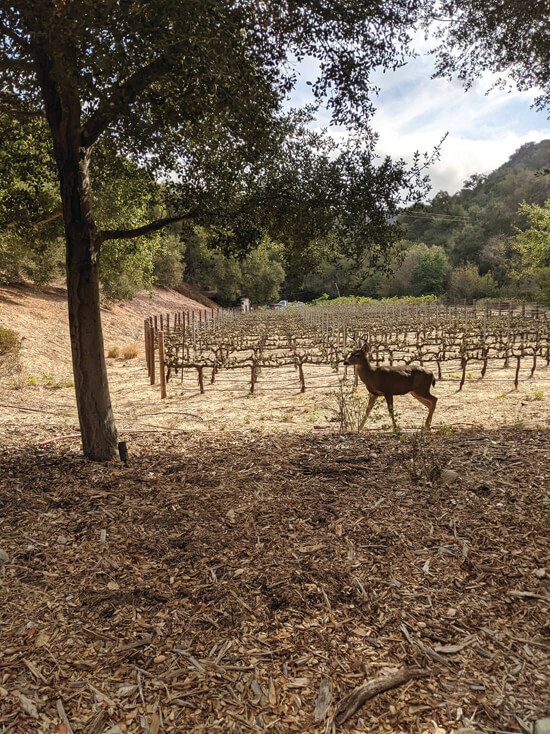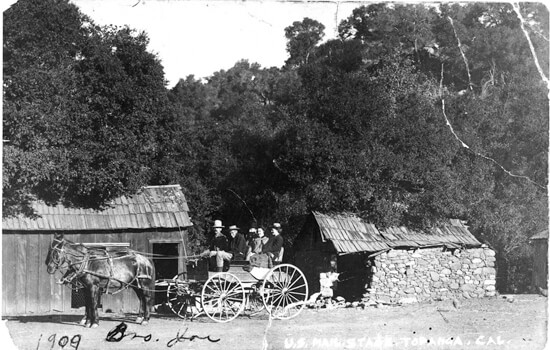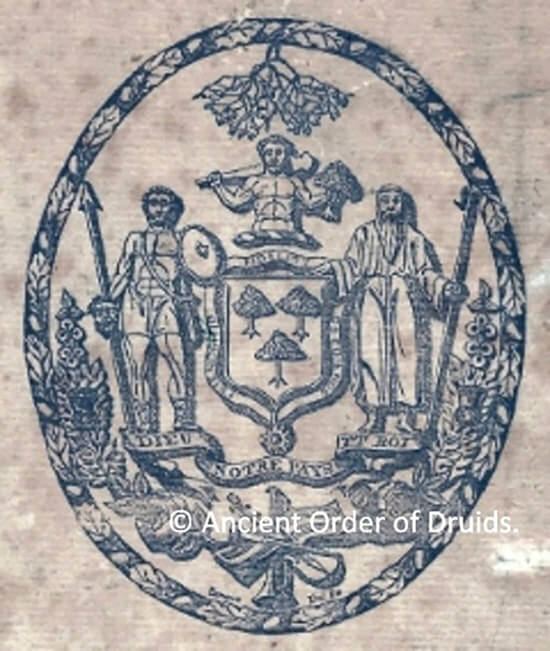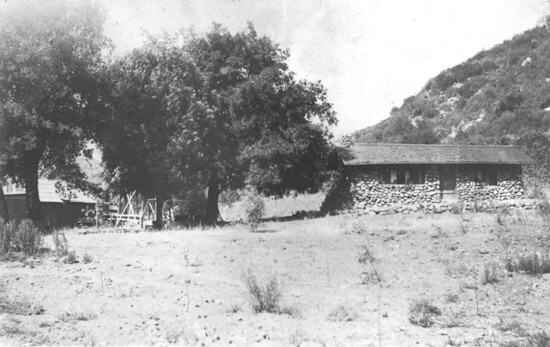The Stone House, Part One: ‘Basque Shepherds and the Mazet Winery’By Pablo Capra | |
The Stone House, Part One: ‘Basque Shepherds and the Mazet Winery’By Pablo Capra On October 24, at the 90th birthday party of pioneer descendant Rose Wiley, Topanga Historical Society (THS) members were enchanted by the stone house of the host, President Ed O’Neill. This inspired THS Archivist Pablo Capra and O’Neill to publish a series of excerpts from a book they are collaborating on that tells the story of each owner of the house, which may be the oldest in the Canyon.
By Pablo Capra
The Basque Country is a historic region, divided up today between Spain and France, with its own Basque language.
The first significant Basque migration to the New World occurred in South America, especially Argentina and Chile. During the California Gold Rush (1848-1955), Basques from this South American group migrated again to the United States. Because the Gold Rush had to be fueled by a large food supply, many Basques figured out how to become rich raising cattle. They joined the aristocratic class of pre-United States ranchers, the Californios, and changed their names to the Spanish equivalents to fit their new status.
When the Californio lifestyle ended due to the U. S. land grab in the 1850s followed by drought during the 1860s, the Basques proved more adaptable than the aristocrats.
Dominque “Domingo” Amestoy (b.1822), the Basque owner of Rancho Los Encinos (Encino), discovered that it was more profitable to raise sheep than cattle. He and the Basque shepherds who followed his lead probably gave Topanga its Spanish name, Garrapatos (“sheep tick”), when the uninhabited canyon was used for grazing.
Pete Du Bois is the earliest known rancher who grazed his livestock in Topanga sometime before 1870. Although he was called a Frenchman, the majority of French speakers in California at the time were actually Basques. He and his herdsman, Brigadore Valdez, built the first house in Topanga by the fork in the rivers. Their stone hut became a picturesque ruin that endured until its chimney collapsed in 2005.
Other nearby ranches owned by Basques were Rancho Las Virgenes (Agoura Hills) and Rancho El Escorpión (Calabasas). Dozens of Basques lived on these ranches and found new work in the West Valley’s lime quarries, which had been opened by the Spanish to plaster their missions. |
 Miguel Leonis (1822-1889) was the most prominent local Basque. In 1859, he took over Rancho El Escorpión after marrying Maria del Espíritu Santo Chijulla (1821-1906), the daughter of the owner, Odón Eusebia (b.1795), the last Chumash chief of Humaliwo (Malibu). With the help of a private army and over the bodies of encroaching homesteaders, Leonis pushed the boundaries of his ranch into Woodland Hills. Homesteaders Francisca and Pietro Alladio testified to his violent ways in court.
“...upon the 18th day of August, 1885, the defendant, Miguel Leonis, came to the dwelling house and residence of plaintiffs, at Leonis’s place, upon the Los Angeles river, when plaintiffs were at their supper in said house, and maliciously kicked in the door of said house, and with loud voice maliciously threatened to kill plaintiffs if they did not leave the premises, and at the same time discharged into the air while standing in the doorway five times in rapid succession a deadly firearm known as a revolver.
“Francesca... greatly frightened, fainted, and was thrown into a violent fever, and remained sick in bed therefrom for two weeks.”
(“Heavy Damages,” Los Angeles Times, 1886-02-26)
Topanga’s first permanent settler, in the 1870s, was Jesus Santa Maria, a Mexican who raised his family on a ranch in the vicinity of the road that’s now named after him.
 | 
In the 1880s, a Frenchman (but probably Basque) named Frederico Joseph Mazet (b.1850) settled in Old Topanga Canyon. Mazet had previously owned property in downtown Los Angeles. In 1889, perhaps the same “Mezet” tried to open a saloon at 708 Temple Street, but a Christian group who held gospel meetings there protested his application. This setback could have led Mazet to start his winery in Topanga, where he built a stone house (like the one at the fork), with his Mexican wife Lebrado (b.1853), children Frederico (b.1887) and George (b.1897), and “French” servant Andre Eyram (b.1875). The Topanga Story’s “School” chapter also lists a son named Willie, seemingly close in age to Frederico, who doesn’t appear in census records.
Dolores Trujillo, of Topanga’s second pioneering family, gave this account of what the Topanga school was like then.
“‘We often smoked in school then,” says Mr. Trujillo, “and I guess we made it pretty tough for the teachers. We only went to school for fun, mainly to get out of work at home. The school was then conducted in a log cabin near the store [Pine Tree Circle].”
(“Pioneers of the Santa Monica Mountains,” Sunday Morning Outlook, 1929-02-24)
 |  While certainly not as trafficked as a downtown saloon, Old Topanga was still a popular cattle route that connected through to Santa Monica, and Mazet’s Winery offered the cowboys rest and a row of “honey buckets” (outhouses).
“This route was chosen because there was ample water for the cattle and with the desire to avoid entanglements with stock running in the San Fernando Valley at that time. The beach road was closed at the Rindge Rancho, so that was also out as a cattle trail.
“[Allen] McIssac recalls pausing at the Mazet Winery in the Old Canyon.... Here the men would be treated to some of the Frenchman’s best vintage, but the boys had to be content with water from the spring. They were allowed to pick their fill of big, plump grapes, however, when in season.”
(“Mountain Echoes,” Topanga Journal, 1950-07-07)
Even in the 19th century, Topanga needed activists to keep out corporate interests. In 1888, Mazet and other settlers fought against the construction of a Calabasas toll road through Old Canyon.
In the 1890s, Mazet joined a lawsuit to stave off eviction by the Los Angeles Farming and Milling Company, whose newly acquired Valley property extended into Old Canyon. The company grew wheat, and probably employed local Basques, since this was another industry that they were now excelling in. The lawsuit received national attention, and ended with homestead certificates for 160 acres being awarded to settlers like Mazet in 1897.
In 1905, Mazet moved to the “Leonis Tract,” selling his house to Horace N. Waller and John L. Wood.
In 1908, a fraternal club, the United Ancient Order of Druids, mourned the death of a man named Joseph Mazet, a “pioneer member” of its downtown Los Angeles “Grove.” The club’s name for their lodge,“Grove,” alluded to the oak groves where the ancient Druids held their rites; the club’s emblem featured three oak trees on a shield. The word “Druid” itself is thought to mean “oak-seer.”
An interesting fact about our Mazet is that he made a point of saving his oak trees from being sold as firewood when that became big business in Topanga. It appears that one of the oldest oak forests that still exists in the Canyon survived thanks to a Druid.
“The Stone House Part Two” will continue with “Jack Wood,” who bought the Mazet ranch in July 1905.
Pablo Capra is the Archivist for the Topanga Historical Society and author of “Topanga Beach: A History” (2020). More at topangahistoricalsociety.org.  | | | | | | | | | | | | |
|
|
|
|
|













